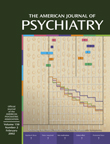I read this textbook cover to cover with the same reaction I had to my first exposure to Aaron Copland and to Snoop Dogg: cacophonous confusion and mild mental pain. As is true for Copland and Snoop Dogg, however, a willingness to work at finding their structure and meaning, and even their “music,” is well worth the effort. At first blush, this comprehensive textbook, which covers both axis I and axis II disorders, is typical of edited books in its collection of seemingly self-contained reviews. The chapters are of uneven quality, there is considerable redundancy from chapter to chapter, and by the conclusion the reader is left wondering what exactly is known about psychopathology. Despite these shortcomings, the three chapters by Raulin and Lilienfeld, Pihl, and Lenzenweger, respectively, are in themselves worth the price of the book. These scholars elegantly and comprehensively manage to highlight significant conceptual issues that should help even the seasoned researcher think more clearly about psychopathology. At worst, therefore, the Oxford Textbook of Psychopathology brings together an impressive summary of psychopathology research data and sophisticated discussions of methodological and conceptual issues.
What is lacking, and in this the Oxford Textbook of Psychopathology is not unique, is the “big picture.” What is the theme, the tune if you will? In self-consciously denouncing (analytic) theory and shifting to a data-based diagnostic scheme (the various DSMs), psychiatry lost its theoretical nerve. In its place is a fragmented collection of disorders that appears to be categorical in nature on superficial reading. The authors of the Oxford Textbook of Psychopathology, the vast majority of whom are psychologists, follow the structure of DSM-IV nomenclature. Having gone through its own antitheoretical period (“dustbowl empiricism,” “black box” behaviorism), however, psychology is more at ease with complex models and theories, a smattering of which can be found throughout this volume. At the very least, the Oxford Textbook of Psychopathology suggests that we have sufficient data to begin the arduous task of making sense of them.
The real value in this book will yield only to multiple readings to ferret out the cross-chapter commonalities that point to unifying themes and perhaps theory. This will be the first assignment I give my next psychopathology student. Consider, for example, that childhood trauma has been associated with eating disorders, depression, substance abuse, and dissociative disorders, among others. Or that “co-morbidity” (or, more correctly, “co-occurrence,” as pointed out by Lenzenweger in the text and by Lilienfeld in an earlier article) links mood disturbance and substance abuse with numerous other disorders, indeed almost everything else. Or that the “biopsychosocial” model (the diathesis-stress variant being the most common) is invoked in virtually all disorders. Or that perinatal brain injury has been associated with disorders as disparate as schizophrenia and eating disorders. Or that “hypofrontality” has been invoked as a possible explanatory construct for both schizophrenia and depressive personality disorder. The diligent and persistent scholar will find in this one volume the raw material for an exercise that could stimulate a return to unifying theoretical speculation.
We should confuse neither data with information nor information with understanding. Perhaps most importantly, we should confuse volume with neither productivity nor quality. There is much in the Oxford Textbook of Psychopathology that is of enviable quality. However, the voluminous text is also a reflection of a broader cultural struggle: trying to do too much too quickly. I was so struck by what I assume are typographical errors that, beginning on page 291, I kept track of them. In the 305 pages of text (excluding references) that followed, there was at least one typo on 47 pages (15.4%). Why make a point of this? Because the same environment that allows such an error rate will be the primary obstacle to the understanding needed in the field of psychopathology. We need to slow down, attend, reread, and think. Only then will we generate the quality of scholarship necessary to meet the challenges of modern psychopathology. Buy the book, read it, then read it again and let me know what you discover.

